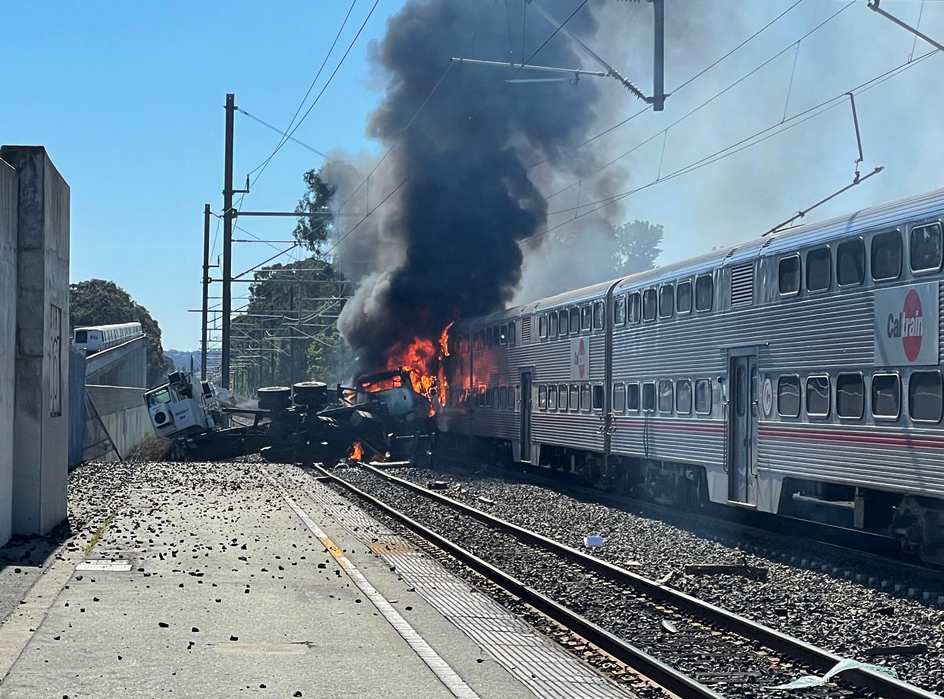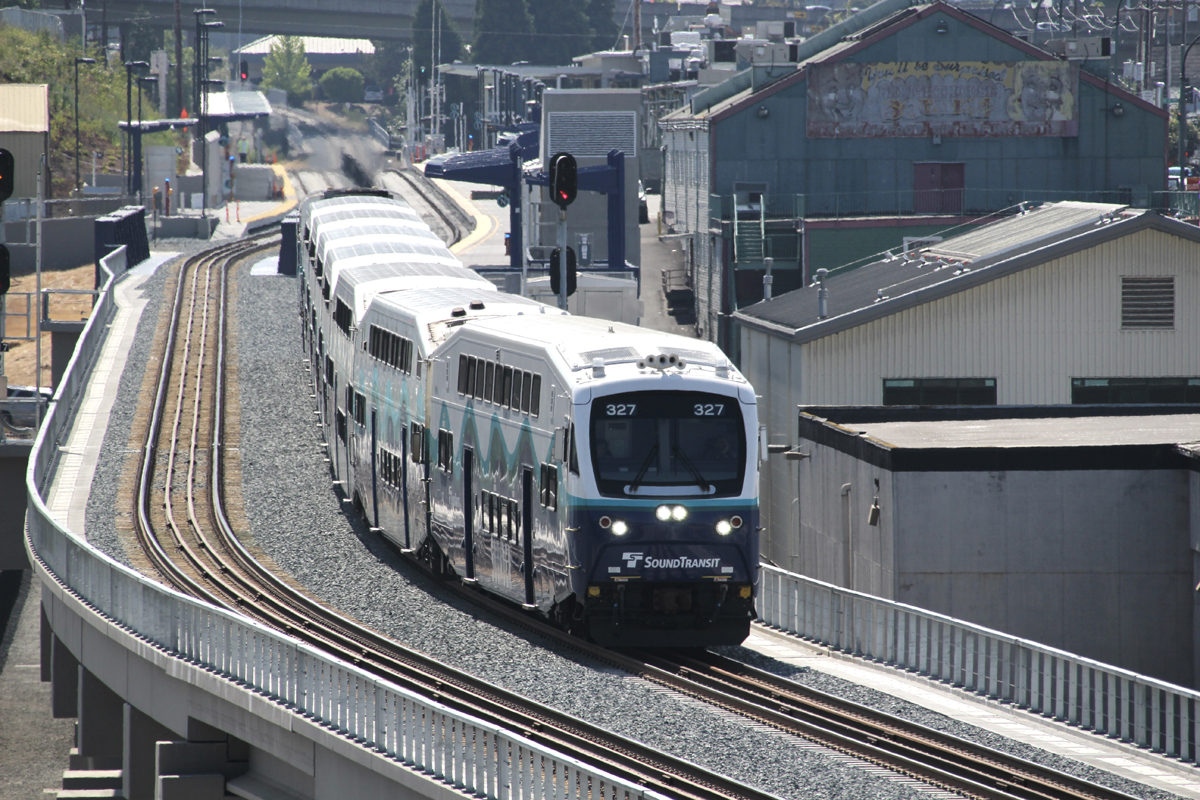
SAN BRUNO, Calif. — At least 13 people were injured Thursday when a Caltrain commuter train struck a vehicle described as “on-track equipment” and caught fire.
Southbound train No. 506 struck the vehicle at about 10:38 a.m. near Scott Street in San Bruno, and caught fire, leading to evacuation of those on board.
KGO-TV reports there were 13 injuries — one severe, five moderate, and seven minor. Eleven of the injured were train passengers; the others were the operator of the vehicle and a train crew member.
A Caltrain spokesman said crews at the accident site were working on the Caltrain electrification project. The station reported the National Transportation Board will be among those investigating the incident.














I don’t know for a fact what happened here, but PTC won’t protect against a hyrail maintenance vehicle setting-on on the wrong track. As Philip says above, most maintenance vehicles don’t shunt the track (UP has them installed as switches in hyrails to be able to turn shunts on and off).
PTC will generally prevent human error on the part of the train crew or dispatcher, but not necessarily on the part of MOW or its contractors.
As to the “Automatic Train Stop” being deactivated the Train 188 derailment of May 12, 2015, happened before PTC was mandated.
The term “Automatic Train Stop” had historically been used to describe an intermittent system using a trackside inductor and a pickup shoe on the locomotive. It functioned only at the signal. PRR did not use this system and it had never been installed on the NEC.
In 2015, Track 1 of the NEC between North Philadelphia and Frankford Junction was equipped with Cab Signals (CSS), where the locomotive would pick up pulse codes from the rails and interpret the frequency of the pulses as one of four signal aspects. Hardware on the locomotive recorded the train speed and compared it with the signal aspect: 180 ppm: Clear, unlimited speed; 120 ppm, Approach Medium, 45 mph; 75 ppm, Approach, 30 mph, no pulse or no carrier, Restricting, 20 mph. Note there was no “STOP” aspect. The speed control function of the cab signal system would sound a whistle for speed in excess of the cab signal, and if the engineer did not make a service brake application within a few seconds, would make a penalty brake application.
Generally, CSS displayed the signal aspect only. It did not show civil restrictions such as curves, bridges, etc. Thus, if there were no train immediately ahead of 188, the CSS would display “Clear,” the 50 mph curve notwithstanding.
Thus, there was no Automatic Train Stop to be deactivated and the cab signal system then in use was incapable of enforcing the curve speed limit.
Amtrak’s version of PTC, ACSES, has a library of speed restrictions that is updated while enroute and enforced independently of the signal system. The signal portion of the system is capable of enforcing a Stop-signal.
Track cars do not shunt signals by design. That line would have had PTC since that system was mandated.
OK, how does PTC figure in this? There have already been at least two collisions caused by PTC, Cayce SC and one on the BNSF.
Don’t forget the derailment of Amtrak Train 188 in 2015 In Philadelphia. The automatic train stop had been deactivated in anticipation of PTC.
One of those tracks had to be out of service on whatever document CalTrain uses for a daily operating bulletin. If CalTrain is a GCOR railroad, then trains operating on the in-service track would have a Form B or Form C specifying the working limits to be passed through. A Form B requires the C&E to get authorization from the Employee-in-Charge to pass through the working limits and at what speed. The Form C also specifies the working limits, can authorize a speed through it, but does not require the train to talk to the EIC before proceeding because the work would not require fouling the in-service track. So what happened here? We have spent buckets and buckets of $$$ on deploying PTC that was supposed to prevent this stuff. Is it possible that work crew were out there without authorization?
How can one even comment on something this lame?
I don’t understand what you mean by your comment.
Ed Burns
Retired Class1